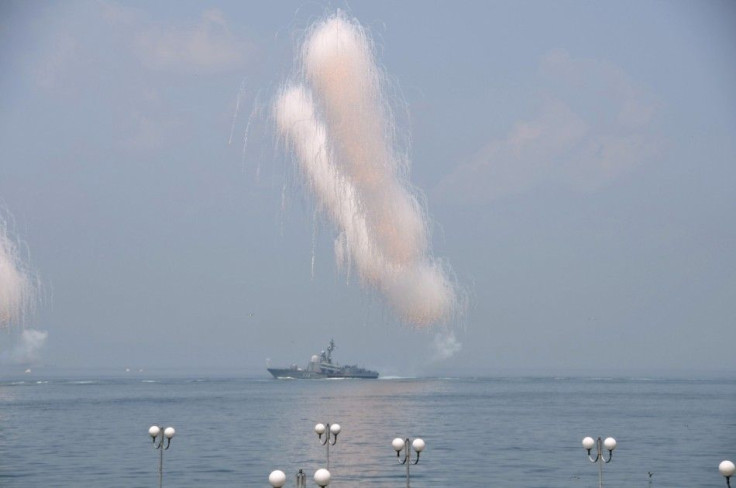Reasons Why Russia’s Emerging Borei-Class Submarine Fleet is a Fearsome Nuclear Weapon at Vladimir Putin’s Disposal

Russia plans to commission eight Borei-class submarines that will be at the disposal of President Vladimir Putin by 2020. The Kremlin characterises the subs as "the backbone of Russia's naval strategic forces for the coming decades."
The Borei subs, also known as Dolgorukiy-class, is being advertised by Moscow as a strategic nuclear deterrent, according to a report by ITAR-TASS news agency, in the same manner that Putin had described the 80 plus intercontinental ballistic missiles (ICBM) that his country will acquire by 2015 as potent weapons against aggressions directed to Russia.
Yet as specs of the Vladimir Monomakh, the third of the Borei subs to join the Russian navy since last year, were revealed last week, it became clear that Putin is adding another war tool that will give him significant edge in engaging the United States and the West into a shooting war.
Below are the key lethal elements, according to RT.com, that are found on the fourth generation SSBN (Ship, Submersible, Ballistic and Nuclear) Vladimir Monomakh:
Better mobility, more efficient operation and general prowess
As replacement for the Typhoon-class subs that Russia had counted on for decades, the Monomakh comes with relatively smaller footprint but without compromising on actual capabilities and firepower.
Designed to be manned by 107 personnel, 55 officers and 52 enlisted men, the Monomakh boasts of the following specs, per Wikipedia:
- Displacement: 14,720 t (14,488 long tons) surfaced; 24,000 t (23,621 long tons) submerged
- Length: 170m (557ft 9 in)
- Beam: 13.5 m (44ft 3 in)
- Draught: 10 m (32ft 10 in)
- Propulsion: 1 × ОК-650В nuclear reactor
1 × AEU steam turbine
1 × shaft and propeller (pump-jet)
- Speed: Submerged: 30 knots or covering 56km in an hour
- Surfaced: 15 knots or 28km per hour
- Range: Can ideally operate non-stop for more than a year but unlimited as endurance is restricted only by food inventory
- Test depth: planned 450m (1,400+ft)
On-board weapons of mass destruction (WMD)
Out on sea, the SSBN Monomakh is a stand-alone war machine that bears 16 Bulava ICBMs on submarine. Such deadly payloads involved fully-manoeuvrable nuclear warheads with maximum hypersonic speed rating of 10.
The Bulava WMD packs up to 150 kilotons of power and can hit a designated target 9000kms away from the point of launch, likely making America an easy target from where the Monomakh will patrol.
Run silent and deep
One major breakthrough achieved with Borei-class subs is its reduced broadband noise, thanks to the "compact and integrated hydrodynamically efficient hull ... and the first ever use of pump-jet propulsion on a Russian nuclear submarine."
As naval experts would attest, very-low acoustic signatures on a submarine would mean that it can run silent and run deep, increasing, for instance, the Monomakh's ability to strike before being detected.
Safe operation
Russia prides the Borei-class subs as its most advanced nuclear delivery system on water but it also made sure that crew members to sail with the vessels have a high chance of survival in case of emergency.
"Safety measures for the subs include a rescue chamber that can host all 107 crew members," RT.com said.
Russia's vision is to deploy three Borei subs before the end of 2014 and five more by 2020, each equipped with 16 Bulava missiles, all of which can be launched on orders of one man - Vladimir Putin.





















